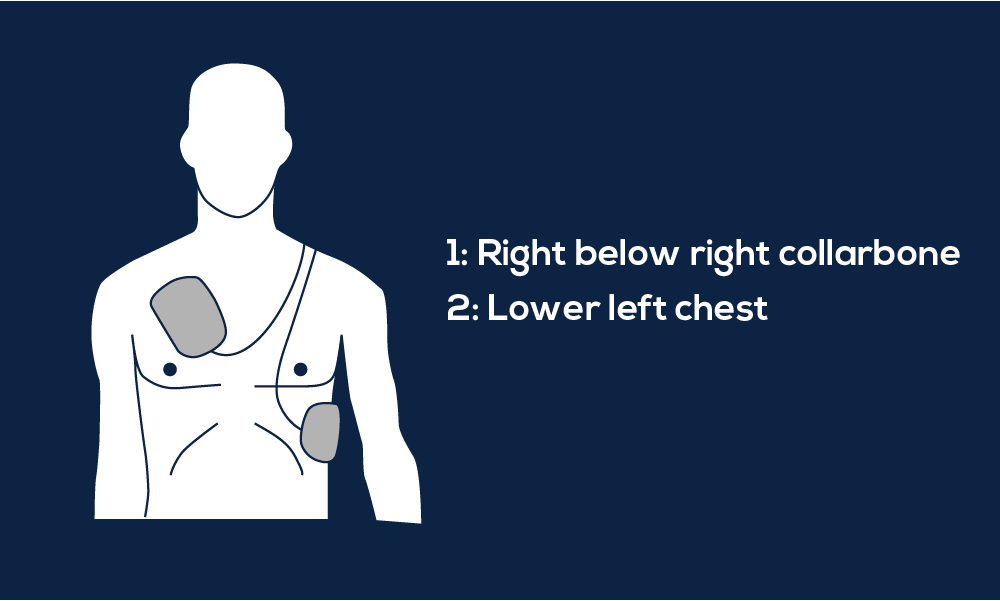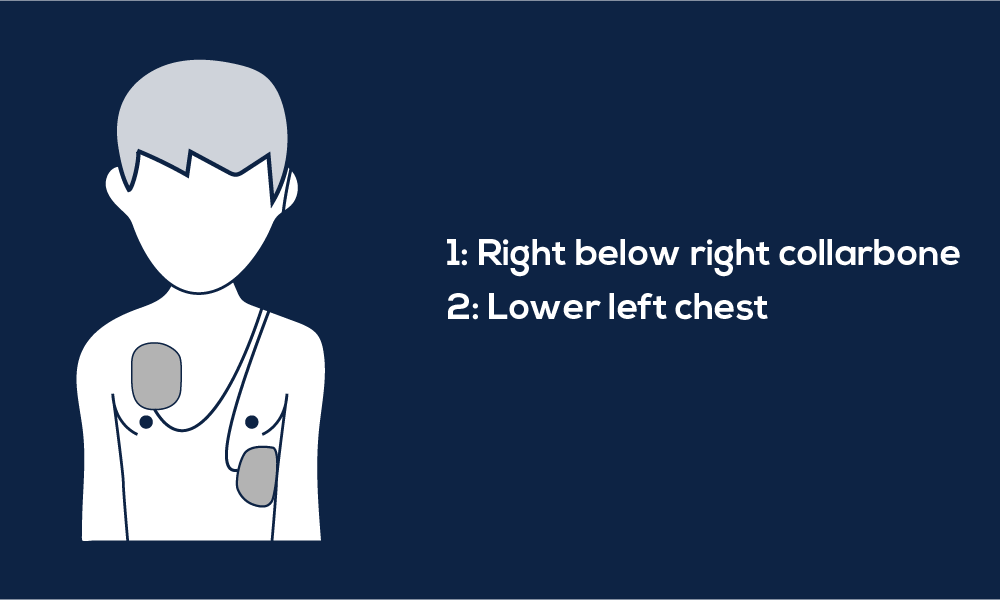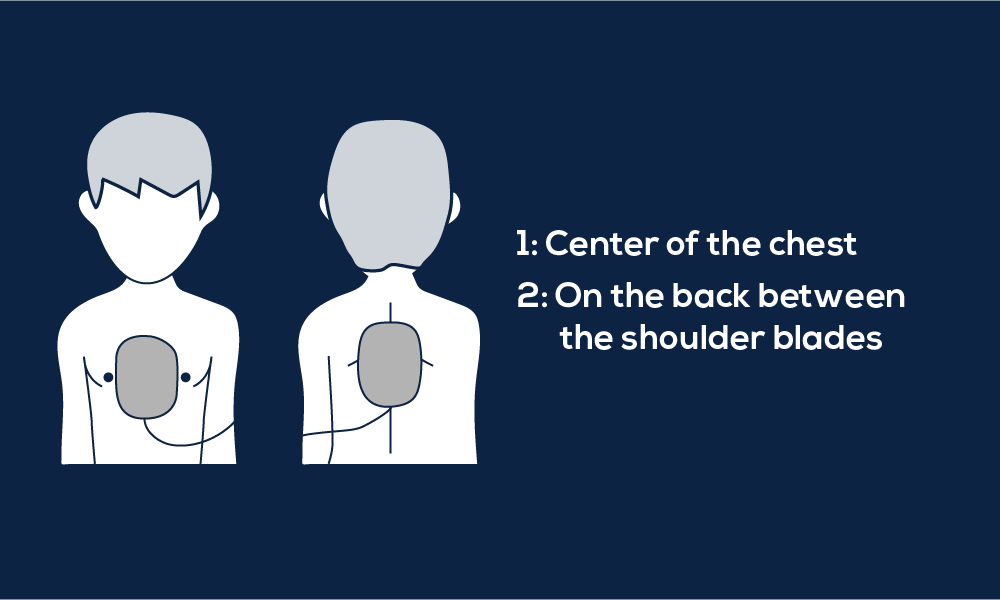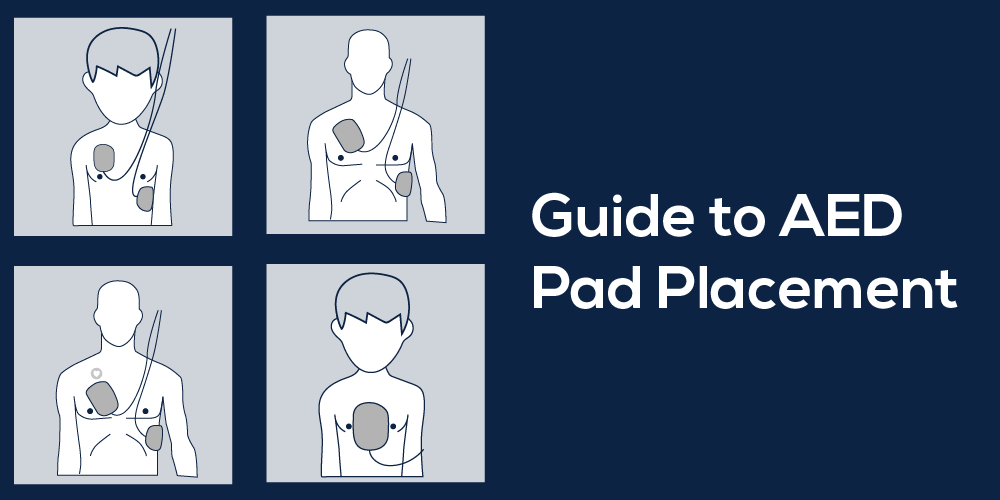Administering defibrillation early can be the difference between life and death when treating someone suffering from sudden cardiac arrest. However, most Americans are tentative when it comes to using an AED. In order to help people feel more comfortable and confident while using an AED, we have created a short guide on AED pad placement.

Implanted Cardiverter-Defibrillators & Pacemakers
One of the most common myths regarding AEDs is that the rescuer should not use an AED on someone with a pacemaker or other Implantable Cardioverter-Defibrillators (ICD). The truth is, you should not hesitate to use an AED in this situation.
Why You Should Still Use An AED
Defibrillation is the only definitive treatment for SCA (sudden cardiac arrest). If someone with an implanted medical device is suffering from sudden cardiac arrest, this most likely means that their ICD has failed to adequately monitor the heart. In this situation, the rescuer would still need to administer rapid defibrillation but would have to be wary of pad placement to ensure that they do not damage the implanted device.
AED Pad Placement
Place one pad on the right side of the chest just below the victim’s collarbone and the second pad on the lower left chest. Try your best to avoid placing the pads directly over the IMD as this could cause damage. If possible place the pads at least one inch away from the IMD.

Adults
Rescuers should avoid using pediatric pads on adults as the pads will be unable to deliver an adequate shock. Instead, use the standard adult AED pads. It is important to note that the adult pad placement will be the same for pregnant women.
AED Pad Placement
Place one pad just below the right collarbone and the other on the lower left side of the chest.

Children 8 & Over
Despite popular belief, standard adult pads can be used on children and should be used on children over 8 years old or over 55lbs.
AED Pad Placement
In this scenario, the pads should be placed the same as on an adult with one pad directly below the right collarbone and the other on the lower left side of the chest. While placing the pads, be mindful that the pads do not touch.

Children less than 8 Years of Age
For children less than 8 years old or less than 55lbs, pediatric pads should be used if available.
AED Pad Placement
The pediatric pads will be placed in the same manner as they are for an adult and child over 8. If these are not available, the rescuer should use the standard adult AED pads and place them in the anterior-posterior position. This means the rescuer should place one pad in the center of the victim’s chest and one on the back of the victim between their shoulder blades. It is important when using standard adult pads on children that you do not let the pads touch.
Infants Less Than 1 Year
For infants less than 1 year, a manual defibrillator is recommended. If this is not available, the rescuer should use an AED.
AED Pad Placement
If there are pediatric pads available, use the anterior-posterior pad positions. The rescuer can do this by placing one pad in the center of the infant’s chest and one pad on the infant’s back between their shoulder blades. If there are not any pediatric pads available, use the standard adult pads and place them in the anterior-posterior position.
Resources
“(AED) Automated External Defibrillator Steps For Infants & Children.” NHCPS.com, 4 Jan. 2021, nhcps.com/lesson/bls-automated-external-defibrillator-aed-infants-children/.
API, Shopify. “Can You Use a Defibrillator on Someone With a Pacemaker?” One Beat Medical, One Beat Medical, 31 July 2017, onebeatmedical.com/blogs/blog/can-you-use-a-defibrillator-on-someone-with-a-pacemaker.
Cardio Partners. “AED Use on Infants and Children.” Cardio Partners, 30 Apr. 2020, www.aed.com/blog/aed-use-on-infants-and-children/#:~:text=Can%20you%20use%20an%20adult,weigh%20less%20than%2055%20pounds.
“Where to Place AED Pads Child: AED Pad Placement Child.” Avive, 8 Jan. 2021, avive.life/guides/pediatric-electrode-pads/.






